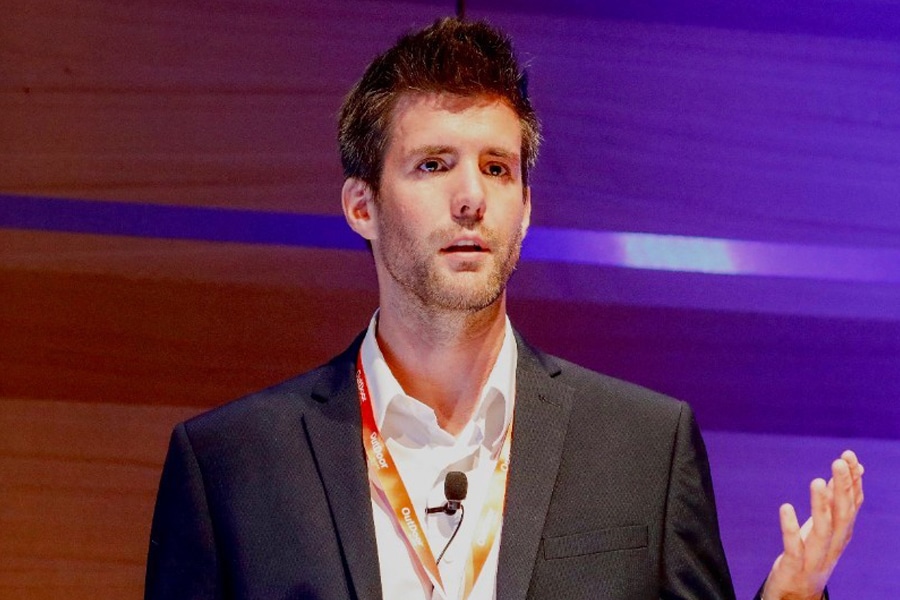
About Mike Ryan: Mike is a Boston native living in Austria. He has a background in retail operations, product management, and digital ads. He has been working at Smarter Ecommerce (smec) for 5 years.
First of all, what are your sources of inspiration?
‘I’m a big believer in letting ideas cross-pollinate. Many people like to spend all their time learning within their field of professional activity – books, podcasts, and blogs all about marketing for example. I make sure to also study and soak up lots of other topics. For me, that variety stimulates more curiosity, so it’s kind of a virtuous circle. And our brains are always making connections, so I get a lot of creative ideas this way.’
What are you currently working on?
‘These days I’m thinking quite a bit about Performance Max like everyone else. But generally, I work on a lot of different research projects.’
In your Linkedin profile, you write about campaign outcomes and business outcomes. What is the difference between those two outcomes?
‘I view campaign outcomes as whatever a given ad platform is telling you – for example, classic metrics like impressions, CTR, CPC, ROAS. Business outcomes are things like cross-channel revenue, inventory turn, and profit. Campaign metrics are important to observe, but they can be quite circular or self-referential. The platform only knows what it knows, which makes it really important for us to recognize the bigger picture and respect the bottom line.’
Google is automating campaign management and gives advertisers the possibility to use Google’s algorithms to optimize their campaigns. How can advertisers help Google to optimize those campaigns?
‘There is a huge array of both auction-time and historical data that Google has exclusive access to, and they’ve unleashed a significant amount of data science resources and computational power to find and model the signals in the noise. What we can do is provide additional signals in the form of high-quality audiences and product data. I also think campaign structure is still very relevant. We’ve outgrown hyper-segmented campaigns and micromanaging bids, but offering the right level of segmentation is still key. That means clustering products into strategic groups with meaningfully different goals.’
In PPC there has been a lot of content created on the evolution of bidding. Would you recommend revenue, profit bidding or CLV bidding to an advertiser?
‘I’ve thought about this quite a bit, and my best advice is to track gross profit and feed that to your bidding. I think CLV is a very worthy goal, but following the 80/20 principle, probably 80% of the value lies in your margin. What I like about CLV is it helps offset short-termism. But in eCommerce, CLV can’t be calculated, it can only be modelled, and to me, that’s too challenging and too risky for most. Profit is a layered onion too, but it’s more verifiable. If you cover profit, you’ll also cover revenue – the right revenue.’
Can you share your experience with implementing complex bidding strategies? Where should an advertiser start, and what are the possible bottlenecks?
‘There is a trinity of interfaces for connecting your campaigns to business data. These are the feed – especially custom labels – the conversion value, and audiences. Campaign structure is then a way to activate that information, since this is the level where budget and goals live. Imagine your goal is to focus on profitability. You could start with campaigns based on margin class via a custom label, advance to profit tracking later on, and consider layering in RFM lists. Bottlenecks on the business side include getting access to quality data. On the campaign side, getting stuck at a local maximum, or at a specific scale and ROAS.’
What do you think PPC advertising in Google Ads will look like in two years?
‘Tough to say, the rate of change is so fast. But I believe Performance Max will see rapid adoption, and this will be the defining trend. All new technology will launch there. This is an important strategy for Google. They want to “de-channel” Google Ads and also shift the conversation away from costs. So the inverse of this is to focus campaigns on audiences and value. It’s not bad advice, really. I think Performance Max is a new advertising platform incubating within the old one. Still, it has its flaws and limits, so for the medium term at least, Google Ads will remain an interesting place to operate.’
What can people expect from your presentation at Friends of Search?
‘I’ve observed so often that marketers are thinking of ROAS as one-to-one with profit, and yet it’s not. I view this as especially critical with the ad market getting ever more expensive and the economic picture looking rather gloomy. The aim of my talk is to discuss the benefits and challenges of profit-based bidding, as well as different approaches to profit. I’ll also discuss various clicked vs. bought advertising effects in that context.’
Mike Ryan will be speaking at the Dutch edition of Friends of Search on June 14 in Amsterdam. Tickets are still available.
Ook interessant

Shampoo Bars en HEMA winnen Friends of Search Awards 2024

Interview Aleyda Solis (Orainti) | The (dis)advantages of Search Engine Experience



